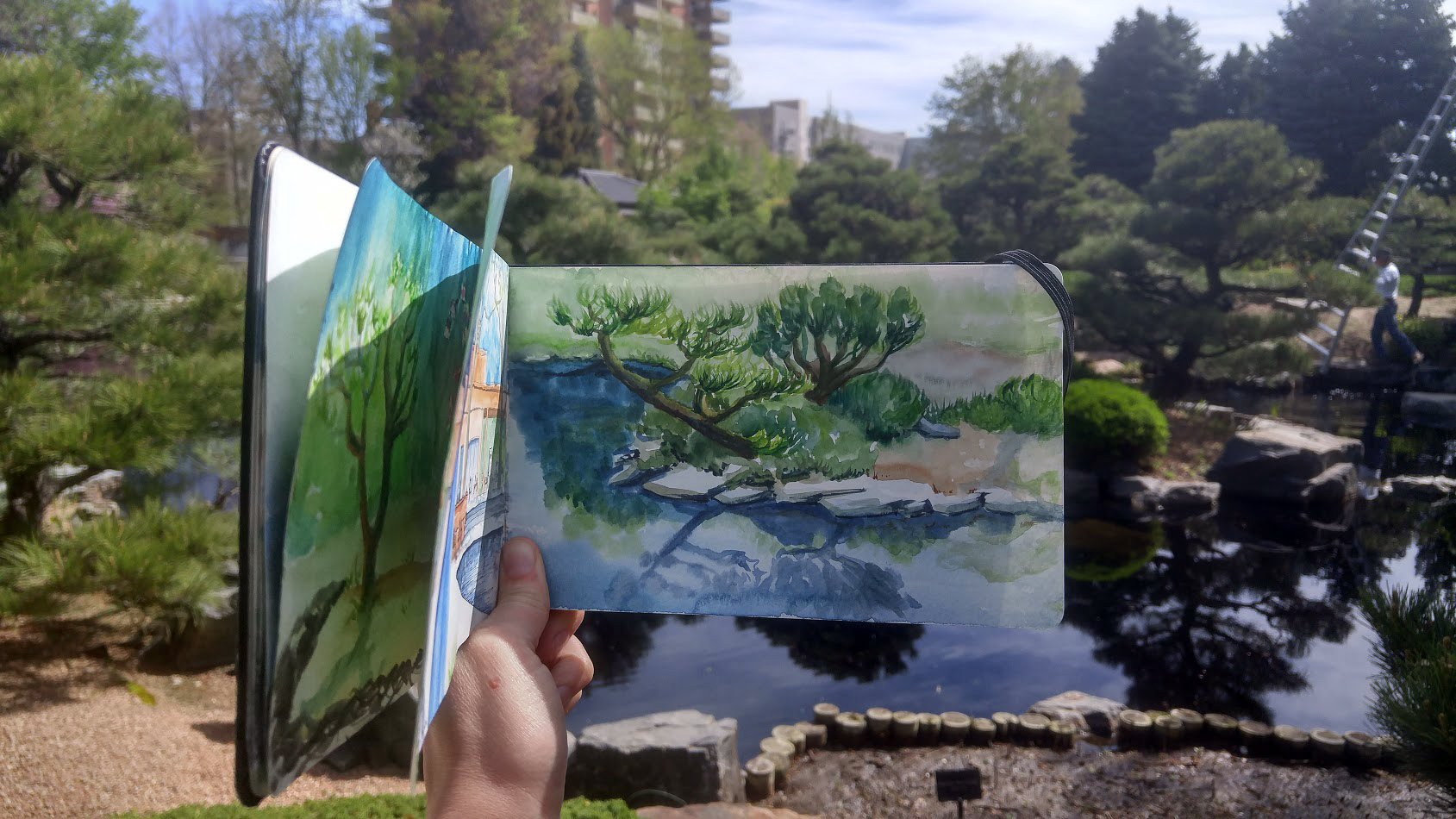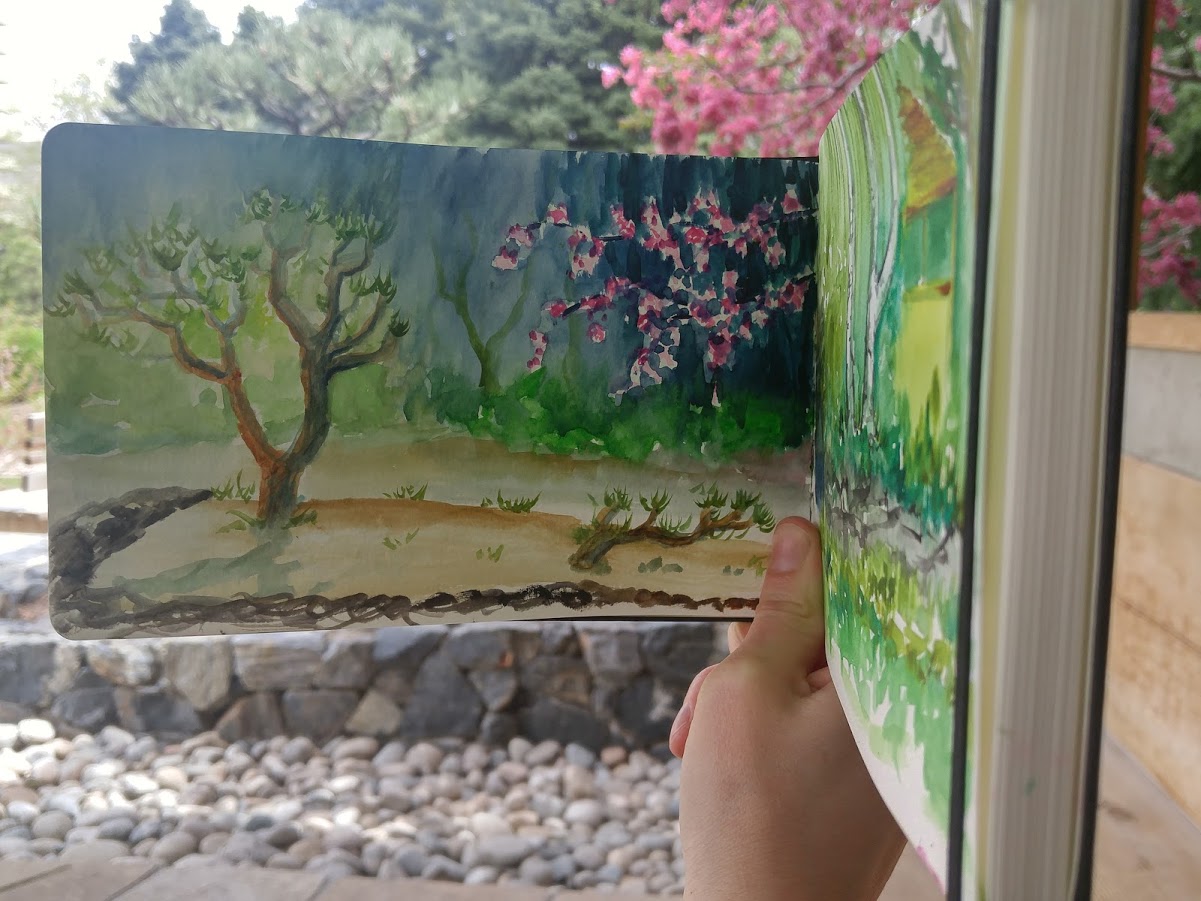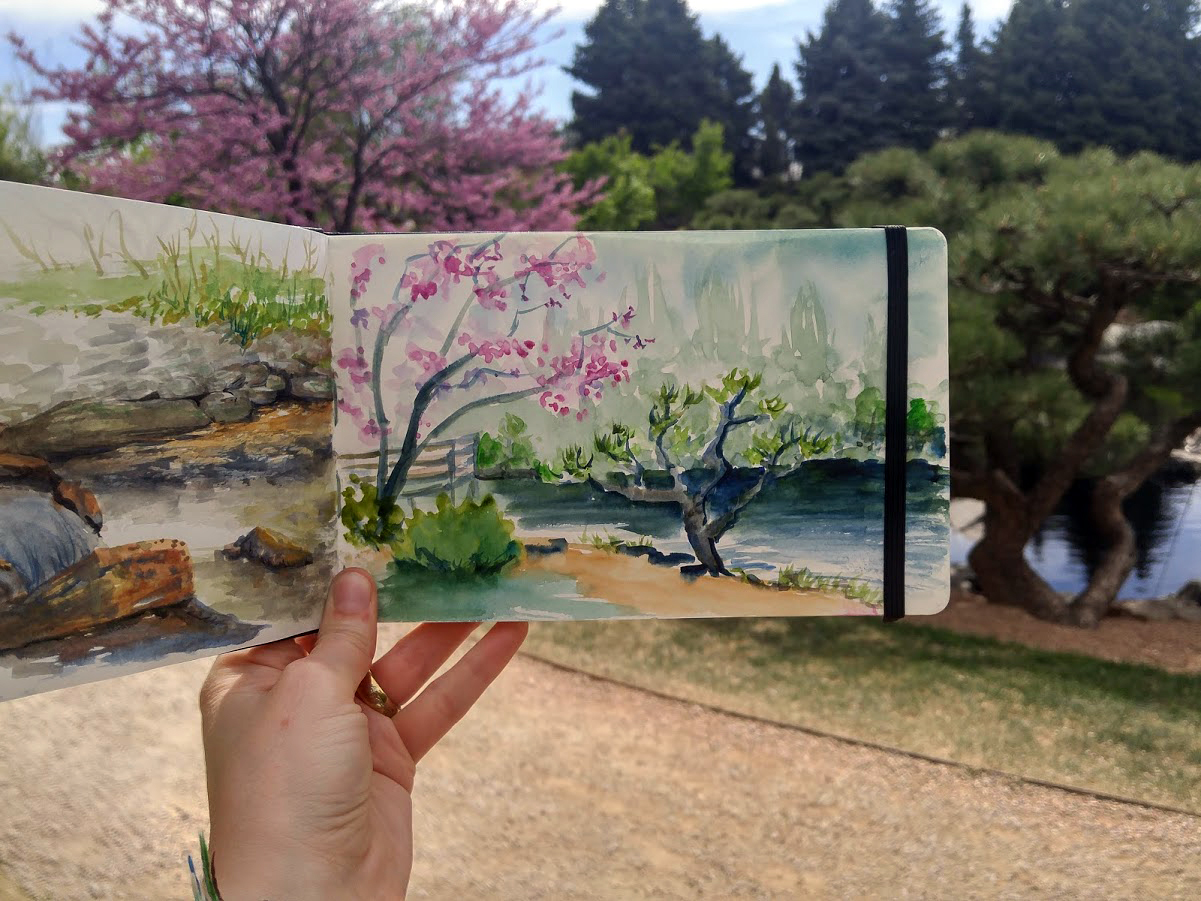I have a slightly different story of how I grew my social media - something that the average artist may not experience. I started out on Twitch.tv - which is mainly a video game platform, but on a fluke, discovered the Creative community there. About two years ago I started streaming my art process (people can watch me paint and interact with a live chat system). There are millions of users on Twitch, and while most of them are there to watch people play video games, a small percent watch the creative streams like mine, and that small percentage was way bigger than I imagined. Within one year, I had 10,000 followers, and from those followers, my other social media platforms grew by word-of-mouth. I now have around 2,000 followers on both Twitter and Instagram (the only other social media platforms I use). That's not a lot, but it's enough for me to do this full time.
Between Twitch, Instagram, and Twitter, I make a living as an artist. (There's also Patreon, but I don't consider that a social media platform...yet. People don't just hang out there and share stuff. They go there specifically to support a user.)
As I mentioned before, I make my living solely online. I do not show or sell my work in physical galleries.
(I want to...someday)
Anyways...without Twitch, I would never have grown on the other platforms this quickly.
I was able to pour ALL my energy into my art streams on Twitch, while simultaneously growing on Twitter and Instagram. Now, if I suddenly stopped streaming on Twitch (which isn't happening), I would have a larger following on social media to work with, and I could pour all my energy into those.
Final thought on this: to truly maximize the potential of a platform involves tons of engagement - like several times a day on each one. Not posting several times a day, but interacting. That's why I emphasize starting out focusing on one or two until you get your feet wet.
2. Quality over Quantity, and be Consistent!
Be careful with "over posting" on your platforms. You can end up desensitizing your followers, OR drive them away with unrelated posts. For example, if you are growing your following on Facebook by mainly posting photos of your artwork, announcements about sales, or links to your shop/website, posting once every other day is a great way to keep everyone informed! Posting once a day can also be great, if you vary your content. Posting two or more times per day, or posting a lot of random things, like a photo of the burger you had for lunch or your political views, is going to over saturate and maybe even turnoff your followers.
(Rule of thumb, don't mix business with personal hot-button topics like politics).
I post on Instagram at least once per day, and for the last several months, have had steady growth. But the thing is, I paint and draw a LOT, so I have a huge pile of work to share. I don't just post for the sake of posting. If I didn't have anything worthwhile to share, I wouldn't. It's much more important to post consistently interesting work than some shite that lowers the average quality of my shared work. Yes, I make some shite art too, but I don't have to share it. It's part of my learning process. Sometimes I DO share it just to show people the process.
Just remember what you put out in the world represents you.
People crave consistency as much as quality. Consistency is very important, not only in terms of WHAT you post, but when you post. For example, you will start to gain a following, and those followers will expect that content from you. If you post a painting every day for a week, those followers will start to expect that consistency. If you suddenly post a photo of your breakfast, you will notice a big difference in the engagement (and you may or may not lose followers). It's your account, you can do whatever you want, but just remember that most people want consistency. (Don't worry about losing followers here and there...it happens!)
Same goes for timing. Try to post at a consistent rate. If you feel you can consistently post once per day, great! If you are posting 2-3 times per week, that's good too. People look forward to your posts and trust the consistent timing. In my experience, people DO unfollow and engage less per post when I post less frequently/sporadically.
3. Time of Day Matters
There are tons of articles about this online already, but the basics are this: Most social media platforms (especially Facebook, Twitter and Instagram) use special statistical algorithms that organize your "feed" for you, based on what they think you want to see. So, your timeline or feed doesn't show posts chronologically like they used to. The order is a result of many computer algorithms at work, analyzing everything you like/comment on/follow in order to make your life "better."
Better? I don't know about that. I don't like a computer making those decisions for me. But...this is the reality of our technological age.
The algorithms take into account how quickly your post gets some sort of engagement after you post it (likes/follows/comments) and those posts filter towards the top of someone's feed/timeline. So, the popular stuff gets seen first/more.
If you want your post to be seen more, you should post it during a time when people who follow you are more actively using that platform. There are lots of sites that post statistics of when Facebook, Twitter, and Instagram have high traffic, and you can find out by doing some searches based on your timezone.
I have been doing tests and really paying attention to mine for the last year or so, in order to discover when MY followers are most active and what time of day works best.
To start out, I highly recommend that you try some tests. Give yourself a three week period. Post stuff in the morning/lunch/night and keep an eye out for when you get more interaction. It will vary based on what you're posting of course, so make sure you give it some time to get a better average.
I've been using @Audiense "Socialbro" app to learn about demographics and traffic. It's free if you have less than 5k followers. It has some pretty interesting stats!
You can use scheduling apps to help ease the burden. For instance, Later.com and Tweetdeck allows you to schedule posts so you can set it up and walk away (Don't forget to interact once it is published).
4. Don't Neglect Your Craft
First and foremost, you are an artist (right?). Continue to grow your skills, and don't lose site of what your craft means to you. Being prolific (creating a lot of work) means you will improve, and you will have more content to share. BUT don't forget... quality over quantity when posting.


























